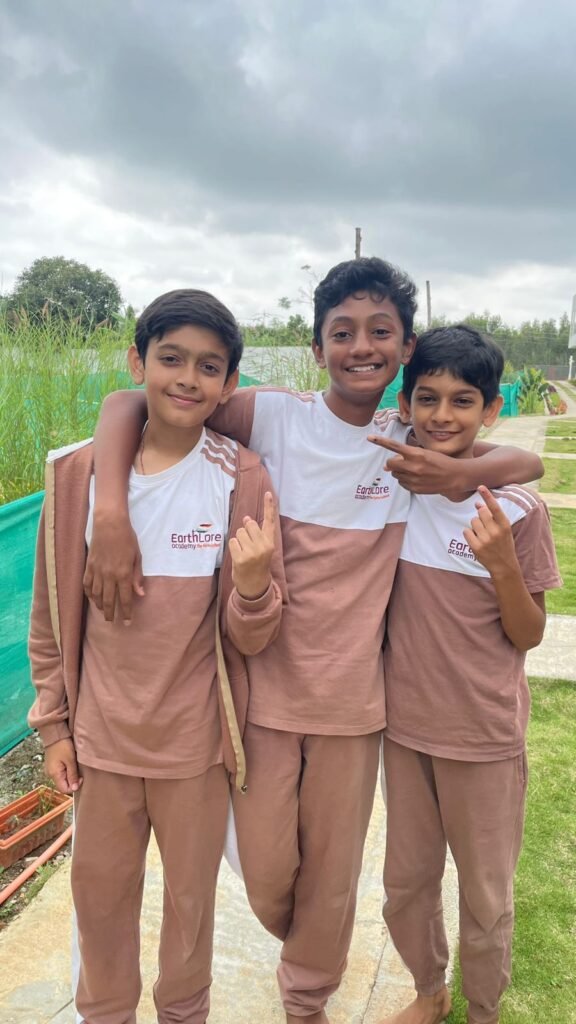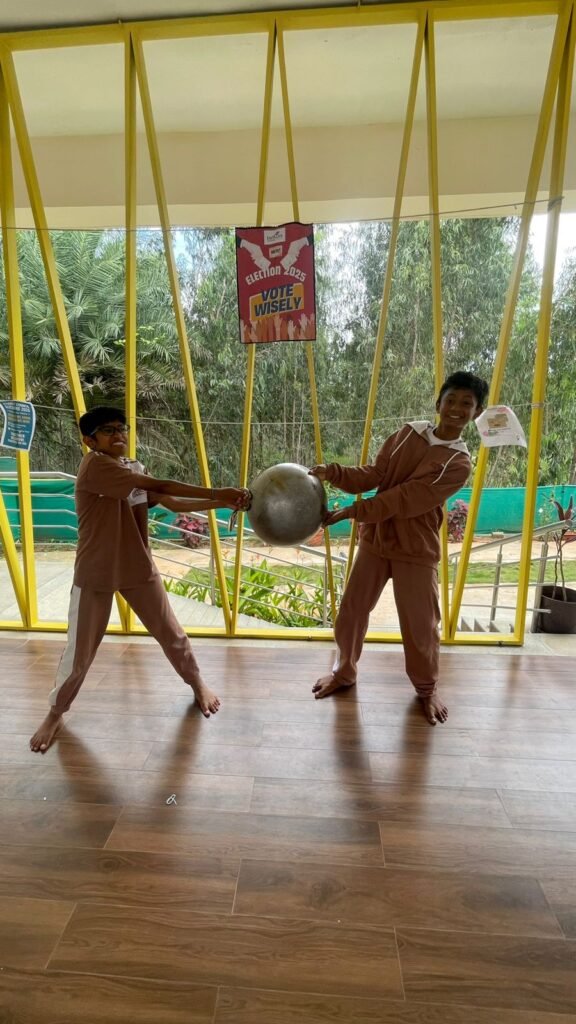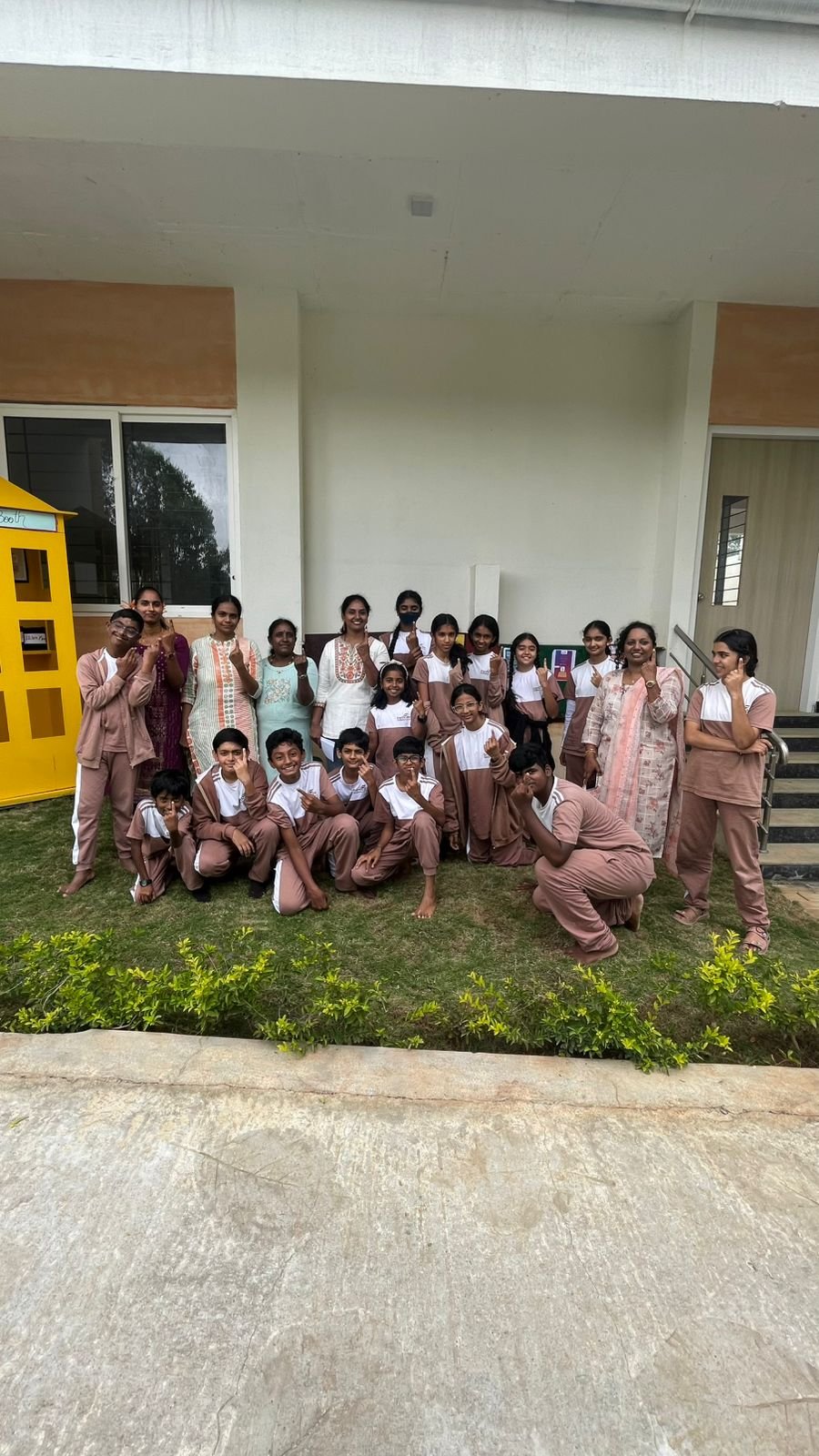

The farm doesn’t really sleep. There was a faint buzzing, hissing and growling all night as if a juicy pack of gossip was being unpacked. After an uneasy sleep in our quaint little room in the farm school, I headed straight into the adolescent’s classroom where Niveditha ma’am was pinning up the different roles and its respective responsibilities. Apparently, an election was around the corner and the adolescents were preparing to campaign, and had decided to collect personal references from the adults in the environment.
I looked around this very colorful and strange-looking classroom, which looked like a museum of thoughts and a collection of random Knick knacks. There was a kitchen, a room with beads, glue, wax, wool and all sorts of jewelry making, a corner designated for self-expression, a book library with a ladder, a computer and a screen.
I chose the broadest question on my mind, ‘so how does this work?’
Niveditha ma’am walked me through it. Their day starts with the work cycle. One hour. The children would split up into 3 or 4 groups to advance the different kinds of ongoing work such as farm work, kitchen work or working on crafting their products.
The children started walking in. Some elder ones handed in their CVs for the upcoming election. They must have learned how to present themselves on paper. One child who had done the bookkeeping of all their expenses and income updated the final sum. They were doing well, and definitely had a positive balance. He updated these numbers on the community counter, which looked like an old cricket scoreboard made out of cardboard – a public display of what they had all achieved together. Apparently, they got this idea from the petrol bunk. The same child was assigned to withdraw an amount of cash from the bank – needed for other activities. He carefully wrote down a sum that he had calculated and went on to draw the money from the ATM.
One girl handed me her research document. The theme was ‘economic sufficiency’. She had documented her understanding of what is a resource, what are natural and human-made resources, different kinds of markets etc. I understood that they started thinking of economic sufficiency, sat down and wrote a mind map on how they can sustain income for all the resources that they need on the farm. This exercise brought out topics like what are resources, how to keep an account, what are the different types of markets etc. Another child’s research document had delved into the details of what are the resources that are being imported and exported from the different regions of India too.
With the few children who had farm activity today, I proceeded to the farm with Niveditha ma’am. The farm was divided into different sections. The most evident part was in the shape of a Mandala. It had sunflowers planted in the center of the Mandala. Apparently, the children were trying to figure out a way to make the water stay on the farm since the water was seeping away every time. So, they decided to think of a pattern that will help them retain water. They hunted around for different patterns in nature such as in leaves and insects. They realized that the same patterns also exist in the cosmos at large, and discovered even more about the solar system at large in this process. They even ventured into Buddhism where monks drew mandalas every day and washed them away every single day to understand the impermanence of all things. Having decided on the mandala model for the farm, they had to figure out how to measure circumference and draw concentric circles, which took them into the nuances of mensuration. The mandala stood majestically in the light drizzle, with its sunflowers representing the sun of the solar system, and it was successfully retaining the water on the farm. We proceeded to the ragi patch and weeded out the touch-me-nots and the other weeds. A cozy cluster of mushrooms in the corner made the children happy because it indicated strong soil health. On the way back from the farm, I saw the little shop set up by the children where they sell their products like lip balms, crocheted jewelry, purses etc. Few of the other children use their work cycles to execute these products.
Afterwards, I sat with Niveditha ma’am and looked at the adolescent CBSE textbooks. The social science textbooks had chapters like resources, factors of production, electoral processes (which was now beginning to cover with their elections), geographical aspects of the country India etc. The children had not only deeply covered these chapters, but had practically experienced them. Niveditha ma’am had so beautifully curated their work cycles to arouse their curiosity about the topics from their textbooks. I also browsed their math textbooks and understood how they uncovered algebraic equations through calculating their income and profits, geometry and even the wonderful Fibonacci series through creating a spiral on the farm. Similarly with science – the use of simple machines, force, energy, botany. Everything is connected to the earth and can be discovered in real life.
Later in the day, the children have more subject specific classes like physics, math etc. where they delve deeper into the nuances of topics that they have literally unearthed. They have community meetings, reading seminars, research cycles and presentations of their findings. They also have formative assessment cycles that help them spread out all their learnings and absorb them once again.
Niveditha ma’am who guides the entire community also instructs the other subject experts like science, math etc. about the needs and interests of the different children, so that a different focus can be used on every child. The children use the self-expression corner of their classroom to write any private thoughts and feelings that they have during their day. The adolescents also have a private journal that is only read by Niveditha ma’am. Since it is a difficult hormonal phase of life, they express everything they feel in this private journal and she guides them through it. This also helps her understand the needs of the child better. She even interfaces with the physical education expert to ensure that their physical activities are in line with the needs of their age group and their personal needs.
It is so moving when you notice that every child is so independent, joyful and full of curiosity.

